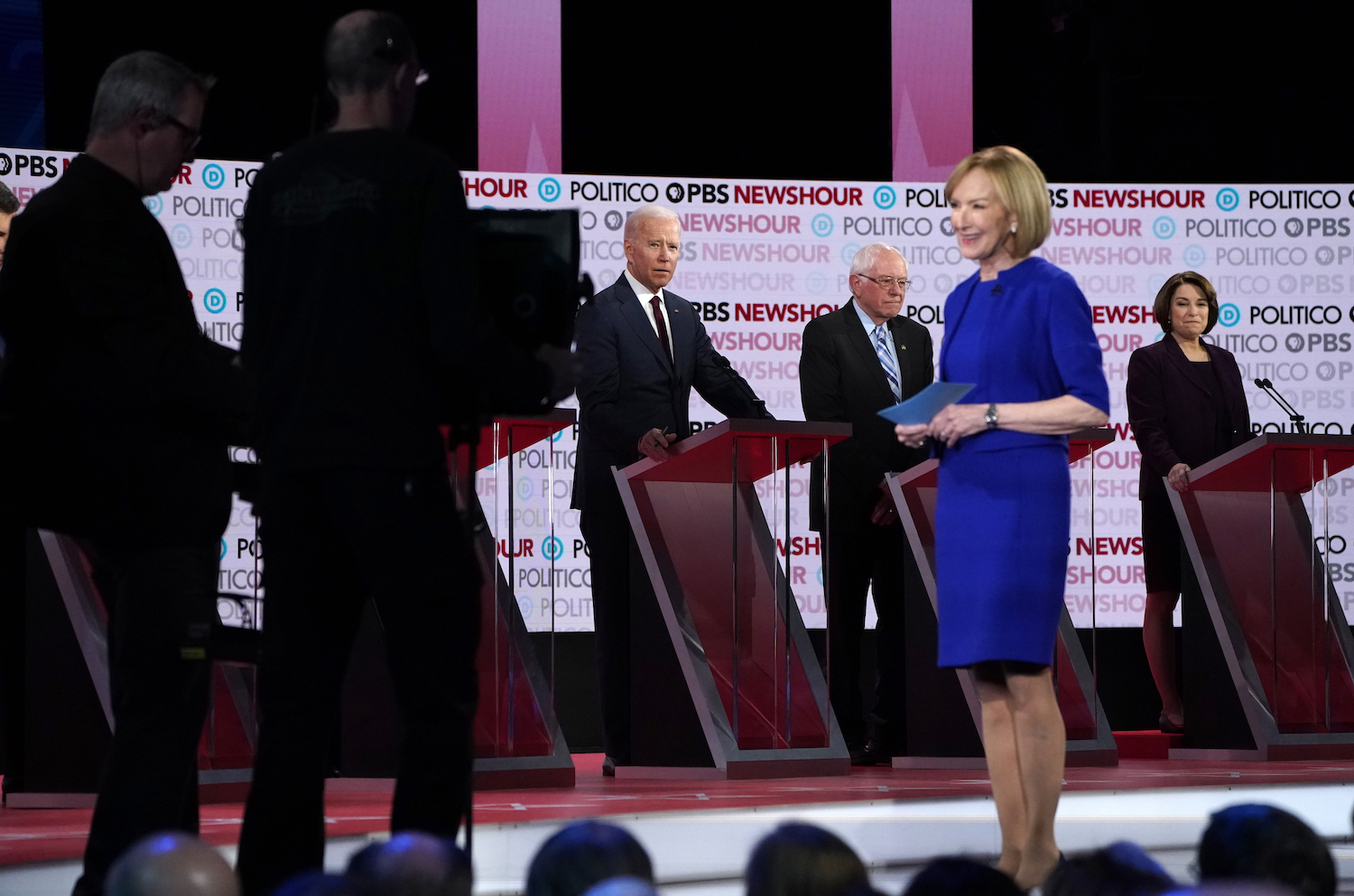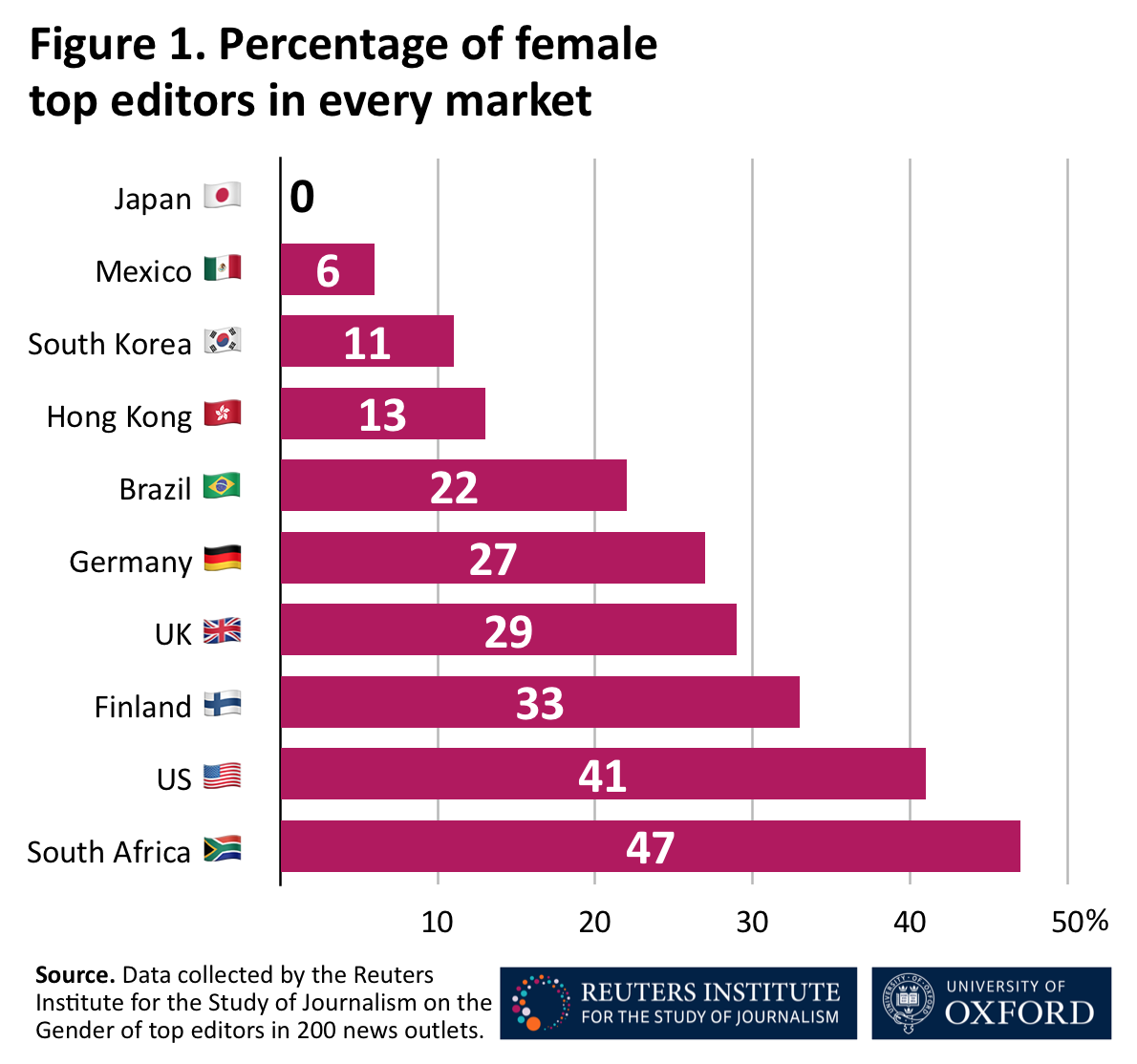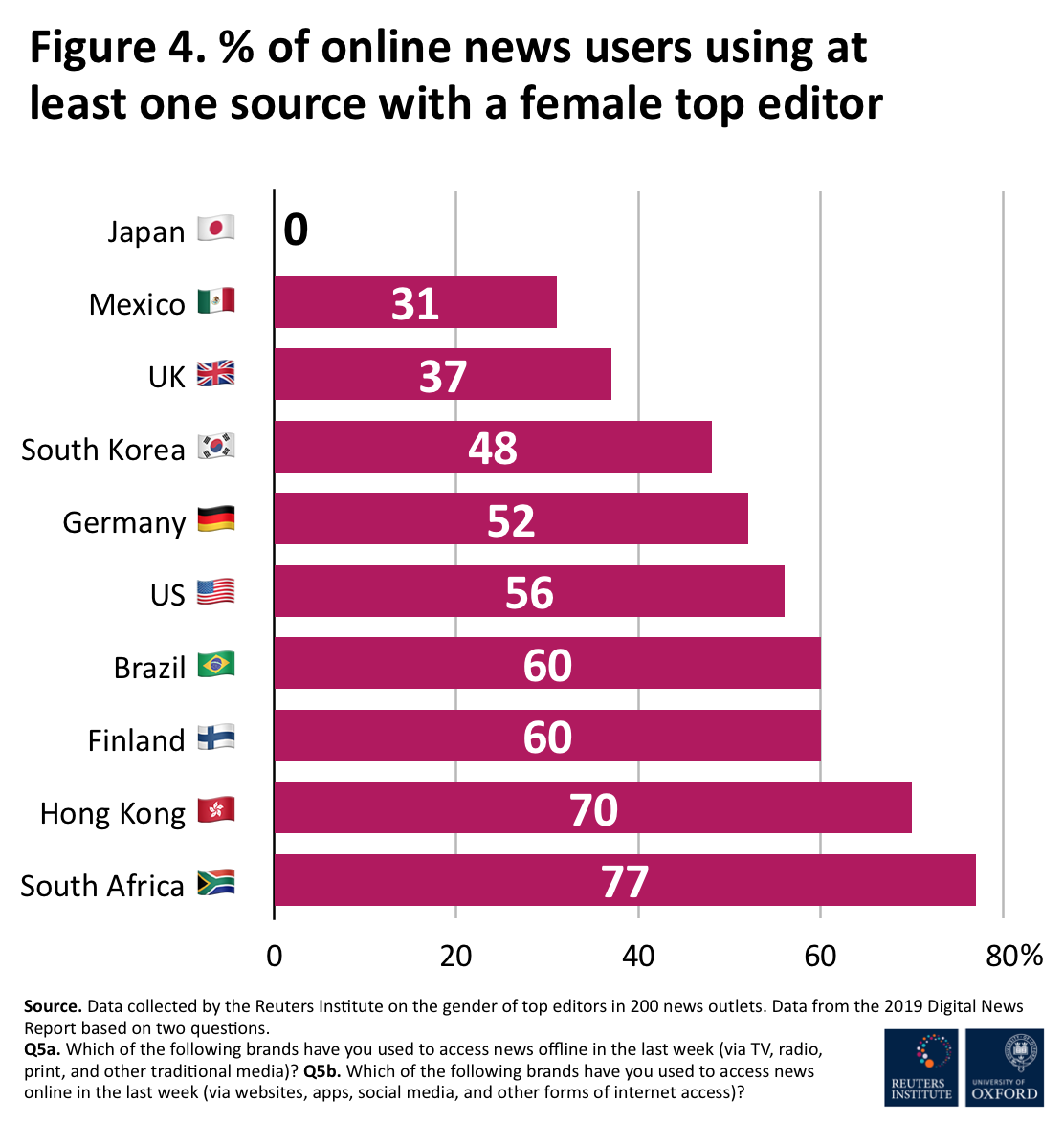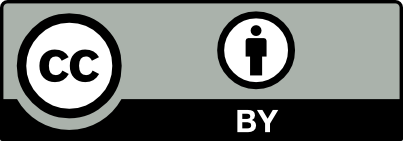In this piece
Women and Leadership in the News Media 2020: Evidence from Ten Markets

PBS anchor and Newshour Managing Editor Judy Woodruff moderates a presidential debate in Los Angeles. / REUTERS/Mike Blake
In this piece
Key Findings ↑ | Methods and Data ↑ | Findings ↑ | Conclusion ↑ | Footnotes | References ↑ | Acknowledgements ↑ | About the Authors ↑Key Findings | General Overview | Methods and Data | Findings | Conclusion | References | Acknowledgements | About the Authors | Lee en español
DOI: 10.60625/risj-krp2-1m03
Key Findings ↑
In this Reuters Institute's factsheet we analyse the gender break-down of top editors in a strategic sample of 200 major online and offline news outlets in ten different markets across four continents.
Looking at a sample of ten top online news outlets and ten top offline news outlets in each of these ten markets, we find:
- Only 23% of the top editors across the 200 major outlets in our sample are women, despite the fact that, on average, 40% of journalists in the ten markets are women.
- Every single market covered has a majority of men among the top editors, including countries like Brazil and Finland where women outnumber men among working journalists.
- The percentage of women in top editorial positions varies significantly from market to market. In Japan, none of the major news outlets in our sample have a woman as their top editor. In South Africa, 47% of the top editors are women.
- When we compare the percentage of women working in journalism with the percentage of women in top editorial positions, we find a strong and positive correlation. Despite this, in nine out of ten markets, there are considerably more women working as journalists than there are women among the top editors.
- Looking more broadly at gender inequality in society and the percentage of women in top editorial positions, we find no meaningful correlation. Countries like Germany and South Korea that score well on the UN Gender Inequality Index have very few women among the top editors.
- There is a notable variation in the number of people who get news from outlets with a female top editor. The percentage of online news users in each market that say they get news from one or more major outlets with a woman as the top editor ranges from a high of 77% in South Africa to 0% in Japan (where none of the major news outlets in our sample has a woman as their top editor).
General Overview ↑
Top editorial positions in major news outlets matter both substantially and symbolically. Top editors make important decisions every day, which their personal experiences will, in part, sometimes influence. Top editors also represent their outlets, and collectively help represent the news media more broadly, and the diversity (or lack thereof) of top editors is thus symbolically important and likely to shape how news media are perceived by different parts of the public. It is thus important to focus specifically on top editors and their background both to understand more about how journalism is done and how it come across to the rest of society (Allsop et al. 2018; Duffy 2019).
Our analysis supplements important research conducted by others working on the status of women in the news media. Similar recent studies include, among others, a report by the International Women’s Media Foundation published in 2011 that found 27% of top management jobs occupied by women across a sample of more than 500 media companies in nearly 60 countries (IWMF 2011); the regular Who Makes the News? reports released by the Global Media Monitoring Project every five years, which in 2015 found that women make up only 24% of the people heard, read about or seen in newspaper, television and radio news across news content collected from 114 countries (Macharia 2015); and regular reports focusing on individual countries, such as the research conducted by the Women’s Media Center in the United States and the organisation Women in Journalism in the UK, which in 2017 found that 34 percent of senior roles in UK national newspapers were occupied by women. We also build on a number of important academic studies including, for example, the work of Karen Ross (2014) analysing women in decision-making positions across 99 major European media houses in 28 EU member states, which found women occupied 30% of senior or executive positions in the organisations surveyed; Suzanne Frank’s (2013) work on how changes in digital media have presented both challenges and opportunities for women working in journalism; and empirical research like the work done by Nikki Usher et al. (2018) documenting how gendered echo chambers amplifies gender biases online.
Methods and Data ↑
We examine a strategic sample of ten markets with varying levels of gender equality, as measured by the UN Gender Inequality Index. To get an overview of global differences and similarities, we include a diverse selection of markets from multiple continents. To be able to leverage available data on the journalistic profession and on news and media use, we picked the ten markets from those covered in Worlds of Journalism (Hanitzsch et al. 2019) and in the Reuters Institute Digital News Report 2019 (Newman et al. 2019). The sample includes South Africa, Hong Kong, Japan, and South Korea from Asia; Finland, Germany, and the United Kingdom from Europe; Mexico and the United States from North America; and Brazil from South America.
In each market, we focused on the top ten offline (TV, print, and radio) and online news brands in terms weekly usage, as measured in the 2019 Reuters Institute Digital News Report (Newman et al. 2019). (Our focus on the most widely used offline and online brands means that some important outlets, in the UK for example the Financial Times and The Economist, both of which have female editors, are not included in the sample.)
For each brand, we identified the top editors by checking their official webpages. The data was collected in February 2020. We looked for editorin- chief or nearest equivalent e.g. executive editor, head of news for TV. The exact terminology varies from country to country and organisation to organisation, but in most cases it is possible to identify a single person. We refer to the individuals identified collectively as the top editors. It is important to note that this of course does not imply that the top editor is the only person who matters, or even is always in fact the most important person in terms of day-to-day editorial decision-making. (As Director General, Tony Hall is both the Chief Executive Officer of the BBC and its Editor-in-Chief both offline and online. So here he is coded as the top editor for BBC both offline and online, even though Fran Unsworth serves as Director, News and Current Affairs.)
The individuals identified were double-checked by journalists from the market in question who have been journalist fellows at the Reuters Institute, as well by our researchers. We also contacted the brands or their press offices to confirm who is their top editor. Where organisations responded, we always defer to their judgement. In some cases where an organisation has not responded to our query, and where there is no single clear designated editor-in-chief, or roles and responsibilities across online and offline parts of the same outlet are unclear, we have made a judgement call as to who to code as the top editor of the outlet in question. As far as we are able to ascertain, every editor in the sample can be identified as either a woman or a man. We coded observations as missing in cases where both online and offline versions of the same brand share a top editor, so the analysis covers a total of 162 individuals across the 200 brands included.1
Findings ↑
Based on this dataset, we find that 23% of the 162 top editors across the 200 brands covered are women. This is substantially below the, on average, 40% of journalists in the ten markets who are women.
Offline brands – generally older organisations with a longer legacy – more often have male top editors, whereas the share of women among the top editors of online brands across all ten markets is more than two and a half time higher. 14% of top editors of offline brands are women and 37% of top editors of online brands are women.2
As is clear from Figure 1, the percentage of women in top editorial positions also vary significantly in our sample. In Japan, none of the outlets covered have a female top editor. In South Africa, eight of the top editors (47%) are women. All ten markets have a majority of men among the top editors.

When looking at the relation between the number of women working in journalism and the percentage of women in top editorial positions, relying on data from Worlds of Journalism (Hanitzsch et al. 2019)3, we find a strong and positive correlation, as shown in Figure 2. Correlation does not necessarily entail causation, but it is clear that markets with more women working in journalism also have considerably more women in top editorial positions. Despite this, in nine out of ten markets, there are significantly more women working as journalists than there are women among top editors. (The United States is the only exception to this.)

Looking more broadly at gender inequality in society and the percentage of women in top editorial positions, relying on data from the UN Gender Inequality Index (2019)4, we find a weaker and, surprisingly, negative, correlation across the nine markets covered (Hong Kong is not included in the UN Gender Inequality Index), as shown in Figure 3. It is hard to imagine that this negative correlation is causal, but the absence of a positive correlation is important in itself. As illustrated by countries like Germany and South Korea – and in the most extreme case Japan – higher gender equality does not in itself point to more women in top editorial positions. Journalism clearly has its own, internal, dynamics influencing career paths and the gender composition of top editorial ranks.

Finally, by combining the data collected for this Reuters Institute factsheet with data from the 2019 Reuters Institute Digital News Report (Newman et al. 2019), we can determine how many people in each market covered access news from at least one major news outlet with a woman as the top editor. As can be seen in Figure 4, the share of online news consumers who say that they read news from at least one major outlet with a female top editor ranges from 77% in South Africa to 0% in Japan. Further, we find that 70% of those surveyed in Hong Kong – followed by 60% in Brazil and Finland – report reading news from at least one major outlet with a female top editor, while only 31% and 37% do the same in Mexico and the UK, respectively.

Conclusion ↑
In this RISJ factsheet we have analysed the gender break-down of top editors at a strategic sample of 200 major online and offline news outlets in ten different markets across four continents. We have found that the clear majority of top editors across the sample are men, and not a single market covered has a majority of women among top editors. While there is a strong and positive correlation between the percentage of women working as journalists and the percentage of women among top editors, there are fewer women in top roles than there are women in the profession as a whole – in line with previous research documenting vertical segregation in the news industry (Franks 2013). We also find no meaningful correlation between overall gender equality in society and the percentage of women among top editors, underlining that there are specific dynamics at play in journalism and the news media. That said, in contrast to previous work suggesting no significant differences between offline and online outlets (e.g. Franks 2013), in our sample there are many more women among the top editors at online outlets than (often older) offline ones. Perhaps there are thus signs of progress? We will know more when we repeat this analysis in 2021 to track developments in gender equality among top editors across the world.
Footnotes
1This means that the results are not always in increments of five.
2The pattern, however, is not consistent. In several markets, there fewer women top editors among the online brands we cover.
3The data from Worlds of Journalism (Hanitzsch et al. 2019) used in this analysis were collected between 2012–2016.
4UN GII estimates gender inequalities in three dimensions: reproductive health, empowerment, and economic status. The higher GII scores indicate worse gender inequality. In our analysis, we recoded the scores to demonstrate the order of the countries with the worst–best levels of gender equality. Hong Kong is missing from the UN GII dataset.
References ↑
- Allsop, J., Ables, K., Southwood, D. 2018. ‘Who’s the Boss?’, Columbia Journalism Review, Spring/Summer. https://www.cjr.org/special_report/editors-by-thenumbers.php (Accessed Feb. 2020).
- Byerly, C. M. 2011. Global Report on the Status of Women in the News Media. Washington DC: International Women’s Media Foundation. https://www.iwmf.org/wp-content/uploads/2018/06/IWMF-Global-Report.pdf (Accessed Feb. 2020).
- Duffy, A. 2019. ‘Out of the Shadows: The Editor as a Defining Characteristic of Journalism’. Journalism. https://doi.org/10.1177/1464884919826818
- Franks, S. 2013. Women and Journalism. Oxford: Reuters Institute for the Study of Journalism.
- Hanitzsch, T., Hanusch, F., Ramaprasad, J., de Beer, A.S. (eds). 2019. Worlds of Journalism: Journalistic Cultures around the Globe. New York: Columbia University Press.
- Macharia, L. 2015. ‘Who Makes the News?’ Global Media Monitoring Project 1–149, http://whomakesthenews.org/about-us (Accessed Feb. 2020).
- Newman, N., Fletcher, R., Kalogeropoulos, A., Nielsen R. K. 2019. Digital News Report 2019. Oxford: Reuters Institute for the Study of Journalism.
- Ross, K. 2014. ‘Women in Decision-Making Structures in Media’, in A. Vega Montiel (ed.), Media and Gender: A Scholarly Agenda for the Global Alliance on Media and Gender, Geneva: UNESCO, 44–8.
- United Nations Development Programme. 2019. ‘Gender Inequality Index’, Human Development Reports. New York: UNDP. http://hdr.undp.org/en/content/gender-inequalityindex-gii (Accessed Feb. 2020).
- Usher, N., Holcomb, J., Littman, J. 2018. ‘Twitter makes it Worse: Political Journalists, Gendered Echo Chambers, and the Amplification of Gender Bias’. International Journal of Press/Politics, 23(3), 324–44.
- Women in Journalism. 2017. ‘Who are the Decision Makers?’ https://womeninjournalism.co.uk/research/ (Accessed Feb. 2020).
- Women’s Media Center. 2019. ‘The Status of Women in the U.S. Media 2019’. https://www.womensmediacenter.com/reports/thestatus-of-women-in-u-s-media-2019 (Accessed Feb. 2020).
Acknowledgements ↑
The authors would like to thank Kate Bartlett, Daniela Pinheiro, Consuelo Dieguez, Emily Tsang, Wei Du, Kohei Tsuji, Jaakko Lyytinen, Juliana Fregoso, Sonho Kim, Aura Lindeberg, Kadia Tubman, Rodrigo Carro, Yasuomi Sawa, Jay Kim, Richard Fletcher, Anne Schulz, Scott Brennen, Sílvia Majó-Vázquez, Matthew Leake, and Eduardo Suárez for their valuable time, input and feedback.
About the Authors ↑
Simge Andı is a Research Fellow at the Reuters Institute for the Study of Journalism.
Meera Selva is the Director of the Journalist Fellowship Programme at the Reuters Institute for the Study of Journalism.
Rasmus Kleis Nielsen is the Director of the Reuters Institute for the Study of Journalism and Professor of Political Communication at the University of Oxford.
Published by the Reuters Institute for the Study of Journalism.

This report can be reproduced under the Creative Commons licence CC BY. For more information please go to this link.

